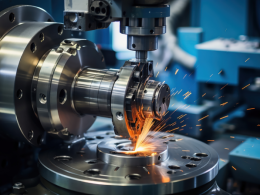Introduction
In the rapidly evolving landscape of the spare parts industry, businesses are continually seeking innovative strategies to enhance profitability and gain a competitive edge. One such strategy that has gained significant traction is dynamic pricing. In this article, we’ll delve into the profound role that dynamic pricing plays in the spare parts sector, exploring its benefits, challenges, and future prospects.
Understanding Dynamic Pricing in the Spare Parts Industry
Dynamic pricing refers to the practice of adjusting prices based on real-time market conditions, demand, supply levels, and various other relevant factors. Traditionally, the spare parts industry relied on static pricing models, which often led to missed revenue opportunities and inventory management inefficiencies. However, dynamic pricing brings a paradigm shift by allowing businesses to set prices that are optimized for current market dynamics.

Benefits of Implementing Dynamic Pricing Strategies
- Optimized Revenue: Dynamic pricing empowers spare parts businesses to set prices at levels that maximize revenue. By analyzing demand fluctuations, competitive pricing, and customer behavior, companies can strike the ideal balance between attracting customers and generating revenue.
- Improved Inventory Management: With dynamic pricing, inventory management becomes more efficient. Businesses can align their pricing with inventory levels, preventing overstocking or stockouts. This results in cost savings and enhanced customer satisfaction.
- Competitive Advantage: Embracing dynamic pricing provides a competitive advantage in the spare parts industry. Companies can react swiftly to market changes, adapting their prices to undercut competitors or maintain profitability even in turbulent market conditions.
- Personalized Pricing: Dynamic pricing enables businesses to offer personalized pricing to different customer segments. This fosters customer loyalty and encourages repeat purchases.
Challenges and Considerations for Dynamic Pricing Adoption
While dynamic pricing offers numerous benefits, its implementation comes with challenges that must be navigated:
- Data Accuracy: Accurate data is crucial for effective dynamic pricing. Inaccurate or outdated data can lead to suboptimal pricing decisions.
- Algorithm Sophistication: Developing and fine-tuning pricing algorithms requires expertise. An overly simplistic algorithm might not capture the nuances of the spare parts market.
- Customer Perception: Setting prices that fluctuate frequently can lead to customer skepticism. Businesses must communicate the value of dynamic pricing transparently.
Future Trends: The Evolution of Dynamic Pricing in Spare Parts
The future holds exciting possibilities for dynamic pricing in the spare parts industry:
- AI and Machine Learning Integration: Artificial intelligence and machine learning will play a pivotal role in enhancing dynamic pricing algorithms. Predictive analytics will enable businesses to forecast demand patterns with greater accuracy.
- Real-time Market Integration: Integration with real-time market data feeds will allow businesses to make pricing decisions that respond to market changes instantly.
- Ethical Considerations: As dynamic pricing evolves, ethical considerations regarding fairness and transparency will gain prominence. Businesses must balance profit optimization with ethical pricing practices.
In conclusion, dynamic pricing is transforming the spare parts industry, offering unprecedented opportunities for revenue growth, inventory optimization, and competitive advantage. By understanding its benefits, addressing challenges, and embracing future trends, spare parts businesses can position themselves at the forefront of this dynamic pricing revolution.












